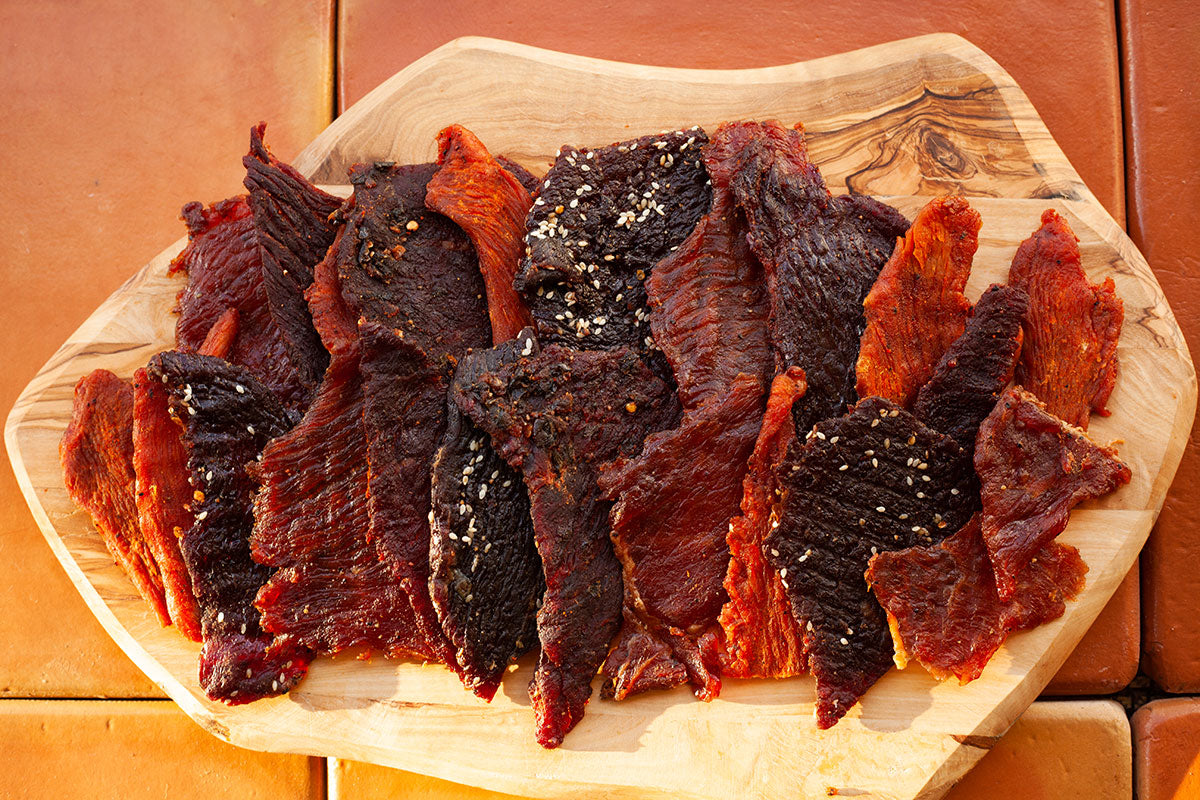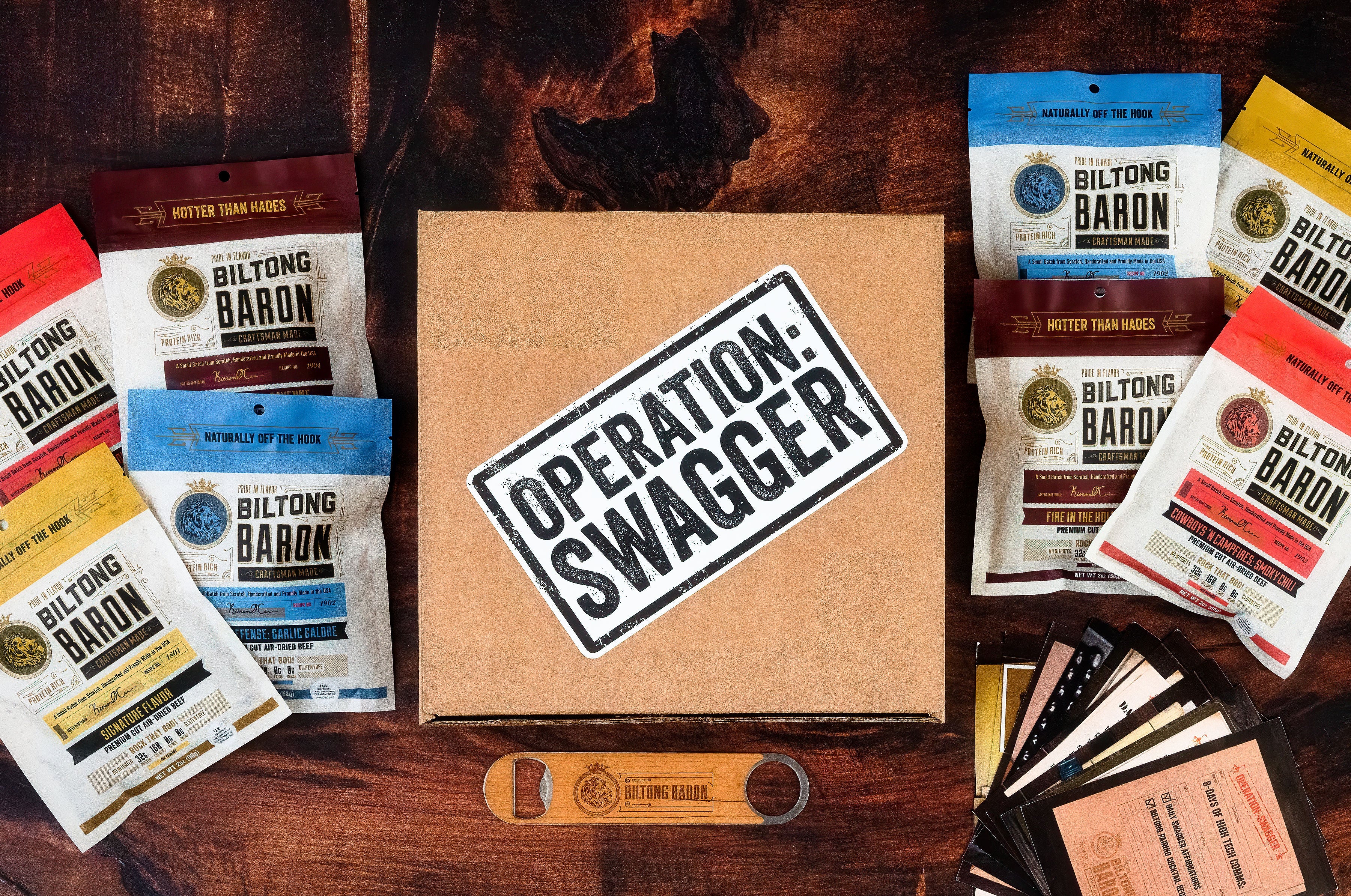-
Recently Viewed
You have no recently viewed items.
-
Featured Brands
- All Products
- About Us
- Contact Us
- Our Blog

Exotic Jerky: Beef Jerky From Around the World
Jerky has a long and storied history. Cultures from regions across the globe have devised their own methods of preserving meat for sustainable sustenance.
The results are eclectic flavor mixes that can send you straight into vacation mode.
Let's look at some examples of exotic jerky from around the world. Fair warning — you may feel the urge to explore very soon.
[Related: Traveling With Beef Jerky: What You Need To Know]
Ch’arki
There’s nothing quite like the original! From South America, ch’arki is the basis of most modern jerkies.
As early as the 17th century, Spaniards noted Peruvians slicing llama or alpaca meat, putting it on ice and then hammering the slices thin. They’d then cold-dry the meat for up to six weeks during the summer months.
You can still find beef, horse and lamb ch’arki in many South American countries. Hot, hearty soups and stews really let its garlic-pepper flavors shine.
Neua Dad Deow: Thai Beef Jerky
It’s unlikely to be the same beef jerky your grandpa shared with you. Still, neua dad deow — or Thai beef jerky — is downright delicious.
Traditionally, neua dad deow is fried, sun-dried beef. The major difference from customary American beef jerky is that people dehydrate Thai jerky only briefly in the sun. This process also speaks to its more literal translation: “single-sunlight beef.”
Biltong Jerky
This cured, dried meat has origins across the southern part of the African continent, including South Africa.
People most commonly use beef for biltong, but you can also make it from various exotic meats. You really can’t go wrong with your protein of choice!
Biltong-makers usually air-dry it for long periods. Jerky aficionados have described the resulting texture as a middle ground between traditional beef jerky and Italian prosciutto.
[Related: How To Make Beef Jerky: Your Guide to Homemade Beef Jerky]
Kilishi Beef Jerky
Also known as kilichi, kilishi is a spicy beef jerky from Nigeria. People traditionally sun-dry it in intense heat for three days.
Kilishi-makers cut strips of beef silver-thin and then season them with a mix of suya pepper, garlic, clove and a touch of salt. Some people like to add ginger and dried cayenne pepper seeds to pack even more punch.
Because of its spicy kick, most folks can’t eat a whole bag — the heat’s too much to handle!
[Related: What’s the World’s Hottest Beef Jerky?]
Carne Seca Beef Jerky
Also known as Mexican beef jerky, carne seca is more of a delicacy than the typical beef jerky you find at most U.S. stores.
Carne seca is Spanish for “dried meat,” and you can nab it easily in southwest America and northern Mexico. People usually season the ultra-thin meat strips with salt and lime. But like other jerky varieties, seasonings like peppers may certainly spice it up.
Cecina Beef Jerky
Another type of Spanish beef jerky, aficionados consider cecina (or cecina de León) an art form. Originally from the Mediterranean, it differs from carne seca in that it has a semi-hard texture and truly melts in the mouth.
Like other jerkies, cecina is the result of the need to preserve meat in a particular climate. The cecina-making process takes into account the intense heat and other adverse conditions in parts of Spain and later Mexico.
Cecina beef jerky devotees eat it as a healthy snack or main dish, and some sprinkle it over soups and salads.
[Related: Can You Mail Beef Jerky?]
Basturma
Basturma (and about a dozen other spellings) brings us back to the Old World. You can still find this cured, air-dried beef in Turkey, Armenia, Azerbaijan, Bulgaria, Egypt, Greece, Iraq and North Macedonia.
People essentially salt this jerky for preservation. Seasonings are diverse and vary per region, but staples include fenugreek, garlic and pepper. The main ingredient can be meat or fish, and folks in regions worldwide absolutely relish it.
[Related: Explore Different Types of Jerky Recipes With Our Tips]
Bak Kwa
Originating in China, bak kwa’s general preparation method has mostly remained the same. The techniques, however, have improved.
Traditionally, people make bak kwa from pork, beef or lamb. They then prepare the meat with sugar, salt, soy sauce and other spices and then dehydrate it on drying racks.
Bak kwa is a time-honored treat for Chinese New Year celebrations. Many people prefer the softer texture that innovative processes have produced.
Sake Toba (Japanese Salmon Jerky)
Fishers catch salmon in the icy-cold freshwater of Japan. The Japanese name for salmon jerky is “sake toba,” and it has a long history in Japanese culture.
To make sake toba, people season strips of salmon with salt and other spices, like soy and ginger. They then dehydrate it via a smoking process. This gives each bite a rich, smoky taste that salmon devotees adore.
Pemmican Beef Jerky
Long before colonizers landed in the U.S., Native Americans were preserving meat in the form of pemmican.
Although similar to modern beef jerky, it has a distinct twist. People form pemmican into small cakes composed of ground meat, animal fat and mixed berries.
The process also allows for a long shelf life that Native Americans relied on for meat preservation.
[Related: Where Does Beef Jerky Come From? Beef Jerky History]
Explore the Jerky Universe
In the Jerky Universe, we offer info about not only exotic jerky from around the world but also practically all things jerky!
And luckily for you, our social channels and newsletter are your spaceship to another galaxy.
Ready for takeoff? Just click the buttons below.
- Choosing a selection results in a full page refresh.









